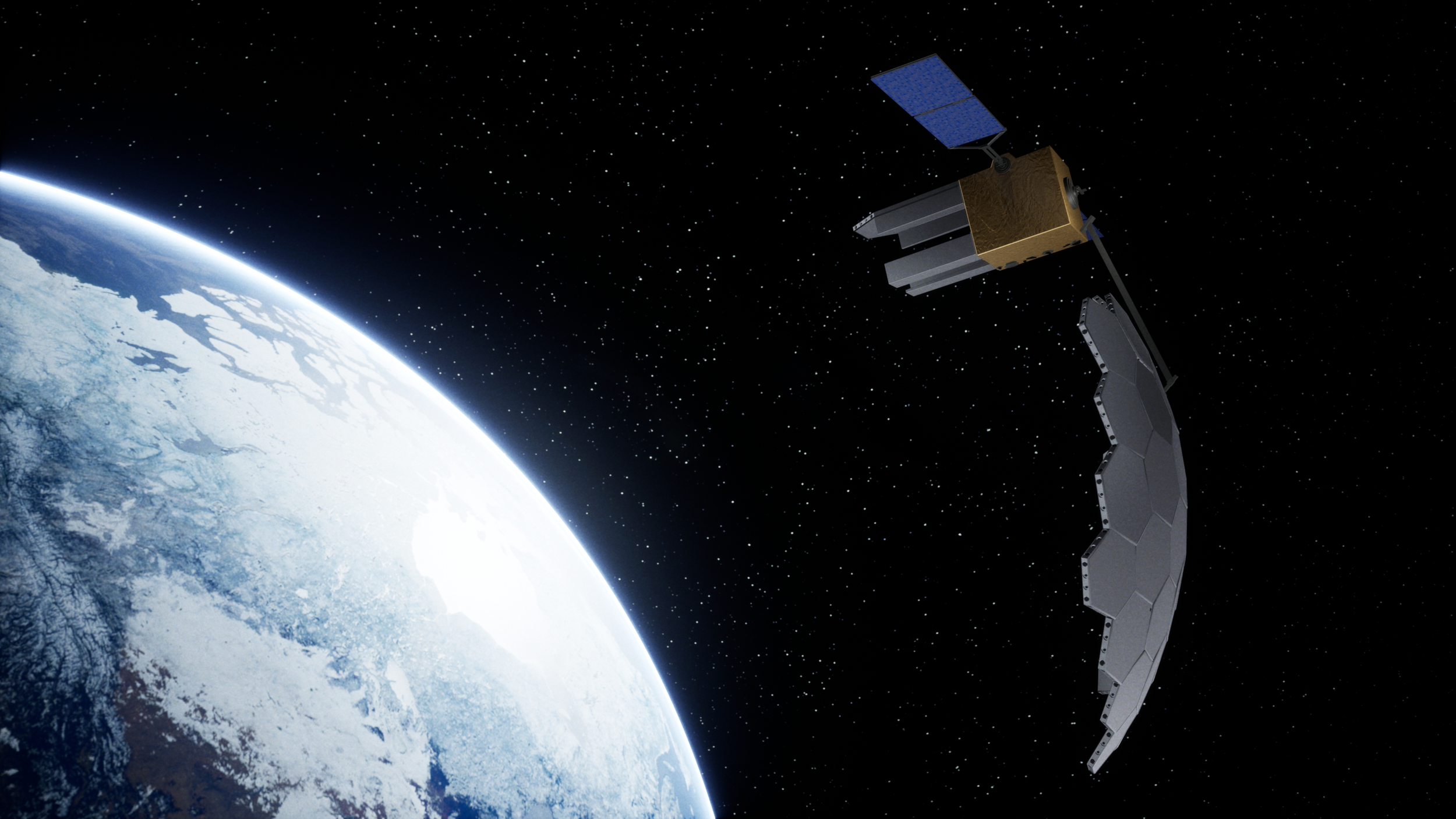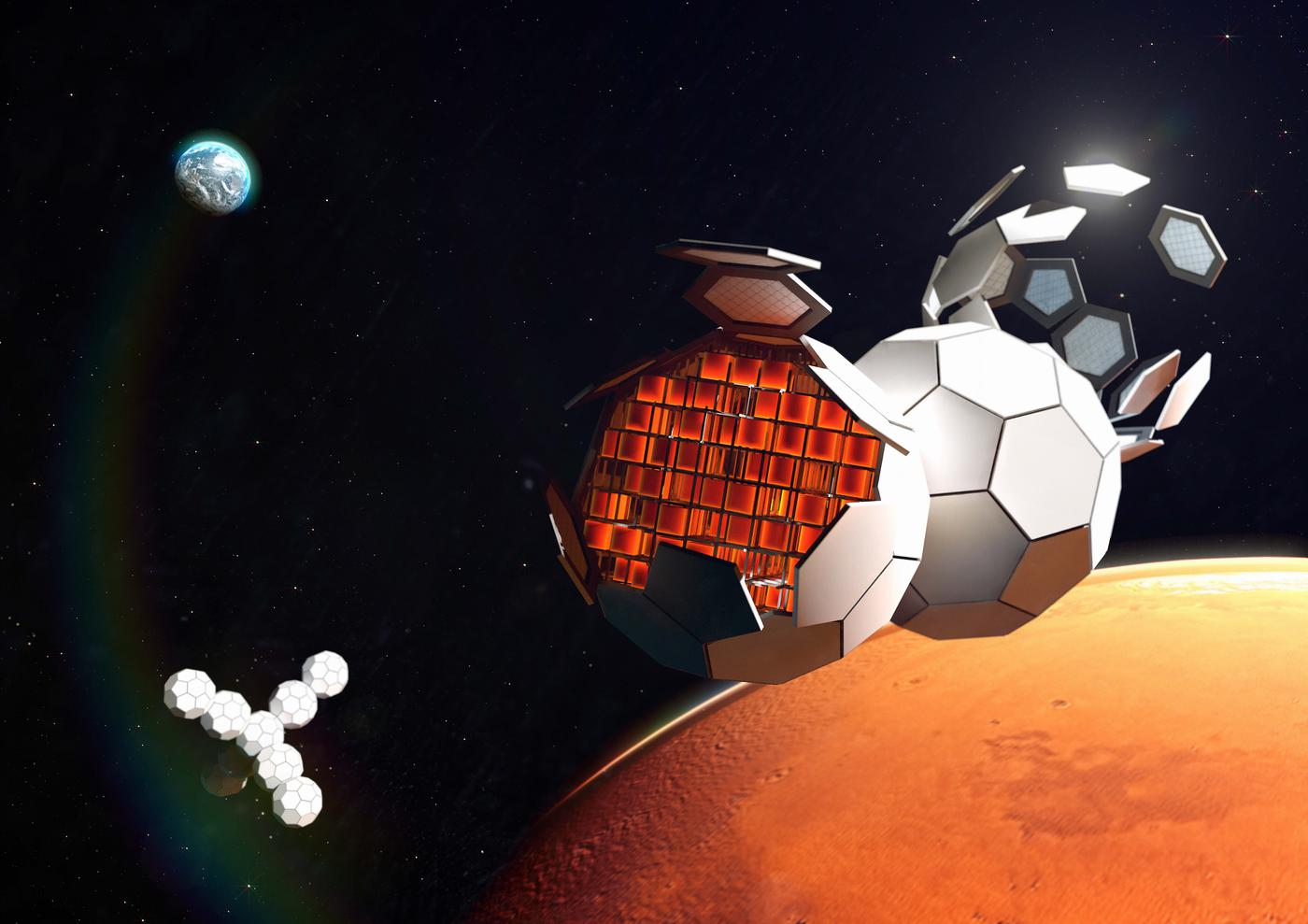Self-assembling data centers in space are becoming reality as Rendezvous Robotics partners with Starcloud — Elon Musk chimes in that 'SpaceX will be doing this'

Starcloud is already launching an AI-equipped satellite featuring an Nvidia H100 GPU into space next month. Still, it plans to build a 5-gigawatt data center eventually, and Rendezvous Robotics can be key to achieving that. Speaking to Ars Technica, co-founder Phil Frank said, "Our mission is to build things that are going to be useful in space."
Data centers have become the new gold rush in the wake of the AI boom, with proponents looking to expand compute at an exponential pace that outstrips our ability to build them. They also require massive amounts of energy and cooling, potentially with detrimental effects on our environment, which we only have one of. Space, on the other hand, is virtually infinite with a free fusion reactor at the center of our solar system that never shuts down—starting to sound like a plan, right? Lots of other companies think so, too, and are convening to explore this landmark opportunity.
The challenge at hand is more difficult than it might seem because, unlike satellites or telescopes, a data center is not inherently mobile. Historically, all our efforts have been focused on building them on land with sprawling construction sites that aren't feasible outside our atmosphere. Deploying a data center in space, therefore, requires ingenuity and efficiency on a scale never sought before — this is where Rendezvous Robotics can help. The space construction firm was born at MIT last year and emerged from stealth this September with a pre-seed round.
Fast forward a few months, and now, it has just signed an agreement with Starcloud, which itself is partnered with Nvidia, to explore data center opportunities in space. All three companies are part of a coalition rethinking how computing facilities can work in a new era.

Rendezvous's flagship product is a tile-based autonomous module system that can assemble itself. Essentially, tiles with their own componentry, like battery cells, processors, and more, that use electromagnets to unfurl after being deployed as a payload from a spacecraft. What you see in the picture above are the tiles stacked on top of each other, ready to separate from the rocket and build themselves out. This tech is based on MIT Media Lab's Project TESSERAE, whose architect, Ariel Ekblaw, is one of the founders of Rendezvous Robotics. NASA has already tested TESSERAE, but the founders intend to turn it into a commercial venture, selling the technology to space architecture firms (such as Starcloud).

Joe Landon, the last of three co-founders, clarified that "you have to either send a person with a wrench to space to assemble, use a robotic arm and plan out every movement of that arm, or design a complicated origami folding mechanical system, which limits how big you can build." Those three techniques are what Rendezvous's work can replace, and the tech is designed to be scalable to huge sizes, perfect for the extraterrestrial dreams of AI GPUs humming alongside our satellites. As part of this agreement, Starcloud and Rendezvous will work together to tailor the tiles for the 5-gigawatt data center specifically.
Speaking of which, Starcloud has said its data center will use "super-large solar and cooling panels approximately 4 kilometers in width and length," which are astronomically larger than anything humans have built before. Ars Technica calculated that the International Space Station's solar arrays — the largest ever deployed in space — are only 0.005% the size of what Starcloud is planning to build. This is why autonomous assembly becomes a necessity; at this scale, conventional techniques (as if anything space-related were typical) lag eons behind, and AI money doesn't stop for anything.
Get Tom's Hardware's best news and in-depth reviews, straight to your inbox.
Simply scaling up Starlink V3 satellites, which have high speed laser links would work. SpaceX will be doing this.October 31, 2025
You can see Elon Musk's response to the original coverage above, claiming that Starlink's V3 satellites "will be doing this," and it seems to be relatively easy, too. The currently in-orbit V2 satellites cap out at a maximum data transmission rate of 100 Gbps, which the upcoming V3 satellites will increase to 1 Tbps. Through Starlink, SpaceX has already demonstrated it can deliver high-speed internet to even remote parts of the globe, so it's not entirely unprecedented that hyperscale data centers are on the world's richest person's mind. Unlike Starcloud and Rendezvous Robotics, though, we'll need more details here before speculating on what the future holds.

Follow Tom's Hardware on Google News, or add us as a preferred source, to get our latest news, analysis, & reviews in your feeds.

Hassam Nasir is a die-hard hardware enthusiast with years of experience as a tech editor and writer, focusing on detailed CPU comparisons and general hardware news. When he’s not working, you’ll find him bending tubes for his ever-evolving custom water-loop gaming rig or benchmarking the latest CPUs and GPUs just for fun.
-
Tom791 The hard part isn’t the power production, it’s the heat dissipation. Pure convection is a terrible heat transfer method. Space is bad for heat transfer because it’s empty.Reply -
Zaranthos We're not quite to Star Trek replicators yet, but we're getting close. You can 3D print food and all kinds of things now. It won't be long before you can inject a subdermal implant that will use an AI language model to universally translate language.Reply
Beam me up Scotty! -
Zaranthos Reply
With a good enough power source or solar I'm sure there are creative ways to do this. Aside from basic simple things like conductive materials to external radiators you could use excess heat to generate a laser beam to transfer heat to space or even more distant objects.Tom791 said:The hard part isn’t the power production, it’s the heat dissipation. Pure convection is a terrible heat transfer method. Space is bad for heat transfer because it’s empty. -
Notton Reply
Here you go: https://en.wikipedia.org/wiki/Radiative_coolingTom791 said:The hard part isn’t the power production, it’s the heat dissipation. Pure convection is a terrible heat transfer method. Space is bad for heat transfer because it’s empty.
With that said, radiative cooling works on earth too. That's the Yakhchal bit. -
Tom791 Reply
That’s not a current technology. Maybe someday.Zaranthos said:With a good enough power source or solar I'm sure there are creative ways to do this. Aside from basic simple things like conductive materials to external radiators you could use excess heat to generate a laser beam to transfer heat to space or even more distant objects. -
Tom791 Reply
Nobody said it didn’t work.Notton said:Here you go: https://en.wikipedia.org/wiki/Radiative_cooling
With that said, radiative cooling works on earth too. That's the Yakhchal bit.
It doesn’t work well.
You can’t beat the heat transfer problem. That’s why astronauts working on EVAs have to have cooling suits to not pass out from accumulated body heat. They sweat like pigs. -
derekullo Next thing you know they will start putting data centers on the moon.Reply
Actually forget I said that! -
bit_user Reply
The only way you solve this by throwing power at it is via peltier (TEC) devices, which are very inefficient. They do not have excess amounts of power, either. I'm sure the 4x4 km array is sized strictly by necessity - and don't forget that every bit of it comes at enormous expense to launch up there.Zaranthos said:With a good enough power source or solar I'm sure there are creative ways to do this. Aside from basic simple things like conductive materials to external radiators you could use excess heat to generate a laser beam to transfer heat to space or even more distant objects.
The idea of "creating a heat laser", as a cooling method, also seems to violate at least a couple laws of thermodynamics.
The main concern I have about cooling is just how this "solar and cooling array" can do the cooling part in a modular way. The longest heat pipe would only be as big as one module, creating the need for thermal interfaces between each module. As we probably all know, each thermal interface acts as a barrier to heat transfer. Power distribution would seem to face similar problems, though perhaps not as severe.
I'm also really curious how structurally robust it must be, in order to withstand stronger bursts of solar wind. -
usertests On SpaceX's end, scaling up Starlink satellites doesn't seem like the way to do it. Instead, leverage Starship to put a lot of mass (perhaps just Starships bolted together) into orbit, (relatively) cheaply increasing the volume and area available to dissipate heat from.Reply
I don't know if the Starcloud + Rendezvous Robotics approach can work, but I hope that NASA can contract them to build a giant telescope using their assembly techniques. Multi-kilometer aperture would be great. -
bit_user Reply
To act as an effective heatsink, something needs to be specifically designed to do efficient heat transfer. I can imagine there are components in the propulsion system of a rocket that are designed that way, but rocket engine design is such a highly-constrained problem that I think it's asking too much for it to then do double-duty as a satellite heatsink. I don't think it would even be very area-efficient, compared to purpose-built radiators.usertests said:leverage Starship to put a lot of mass (perhaps just Starships bolted together) into orbit, (relatively) cheaply increasing the volume and area available to dissipate heat from.
However, I do wonder if there will come a point where we have essentially orbital recycling centers, rather than sending stuff to burn up in the atmosphere.
For this datacenter project, specifically, I think a big issue with reusing other orbital objects is that the datacenter will probably be parked at the L1 Lagrange Point, in order to receive 24/7 sunlight. As you can see from this diagram, L1 is outside even the moon's orbit! So, it would take some probably non-trivial amount of extra fuel to get there.
Earth and its Lagrange points L1, L2, L3, L4 & L5
Telescope optics need to be exceedingly precise. That requires a rigid structure. It took JWST like a couple months to do calibrations. I know not all of that was the optics, but you can just imagine how much havoc it'd cause if the structure was continuously deforming as you were trying to use it.usertests said:I don't know if the Starcloud + Rendezvous Robotics approach can work, but I hope that NASA can contract them to build a giant telescope using their assembly techniques. Multi-kilometer aperture would be great.
For an even larger telescope, I think our best option might be to build telescope arrays on the moon.
Incidentally, JWST is parked at L2.